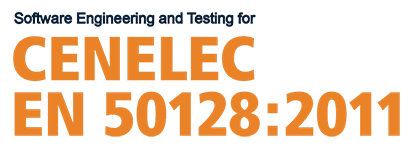Since the beginning of the 21st century, the global rail transit industry has experienced rapid development. Although China entered the field relatively late, by the present time, both the total operational mileage of high-speed railways and the total operational mileage of urban subways have ranked first in the world. Concurrently, the research and development of electronic software systems such as traction control systems, transmission/propulsion control systems, train communication, signaling, and control systems, as well as security systems, have also achieved rapid advancements. With the ongoing development of domestic infrastructure, the globalization of China's trade, and the implementation of the Belt and Road Initiative, the rail transit industry is expected to maintain high-speed growth for an extended period in the future.
Rail transit is a typical high-safety and high-reliability industry, and the reliability of electronic and software systems is critical to train safety. As a result, relevant industry associations have established comprehensive standards to regulate the entire software development process, and through audits and certifications by third-party authoritative institutions, ensure the strict enforcement of these standards, ultimately guaranteeing the long-term safe and reliable operation of rail vehicles and subsystems. In the 1990s, the European Committee for Electrotechnical Standardization (CENELEC) developed industry standards for rail transit signaling systems based on IEC standards, standards from other countries, and industry standards. These standards are known as EN 5012X and primarily include:
• EN 50126: Railway applications—Reliability, availability, maintainability, and safety (RAMS) technical conditions and verification
• EN 50128: Railway Applications — Communication, Signaling, and Processing Systems — Software for Railway Control and Protection Systems
• EN 50129: Railway Applications — Communication, Signaling, and Processing Systems — Safety-Related Railway Signal Electronic Systems
Among these, EN 50128 is primarily used to regulate the development of software for railway communication, signaling, and other control systems. After over 20 years of development, it has evolved to EN 50128: 2011. The core concept of EN 50128 is the Safety Integrity Level (SIL), which covers five safety integrity levels from SIL0 to SIL4. EN 50128 defines the relationship between integrity levels and safety assurance systems, quality assurance systems, related technical measures, and activities at each stage of the safety lifecycle, and sets forth comprehensive requirements. Additionally, with the increasing use of new tools in software development, EN 50128 also specifies certification and qualification requirements for development and testing tools to mitigate safety risks associated with tool usage.
How to efficiently meet the EN 50128 development standards during software development and testing while ensuring system reliability and correctness has become a critical issue for railway transportation system development companies.

Demands and Challenges
-
What specific requirements does SIL certification based on the EN 50128 standard place on the software development process and testing?
-
How to balance efficiency, quality, and compliance?
-
Code static testing and unit testing are too inefficient.
-
Which stages of black-box testing, gray-box testing, and white-box testing can be automated?
-
What automated tools are available to improve software design and testing efficiency?
-
What are the key differences between the requirements and methods for testing embedded software and host computer software?
-
Are existing inefficient testing tools easy to upgrade?
-
What requirements does SIL certification based on the EN 50128 standard place on auxiliary automation development and testing tools?
Solutions
-
Code static analysis, using authoritative static analysis tools such as QAC or Klocwork to meet common coding standards such as MISRA and AutoSAR, and perfectly complying with the EN 50128 standard for code static analysis.
-
Unit testing and integration testing: VectorCAST is used to verify the reliability and correctness of software unit modules, quickly meeting the requirements of EN 50128 for unit testing.
-
Black-box testing, provided by Vector's HiL system test platform integrated with “VT System + vTESTstudio + CANoe,” offers physical hardware simulation and system testing solutions for rail transit systems.
-
Gray box testing, DT10 supports multi-CPU system tracking execution, complex defect tracing, performance testing, etc.
-
Test coverage analysis throughout the software development life cycle to meet the certification audit requirements of EN 50128 at all levels.
-
Use Visure Requirements to manage requirements and establish traceability throughout the software lifecycle.
-
The commonly used tools provided have been certified and verified by a third-party authoritative institution as complying with the EN 50128 standard.
-
Software testing outsourcing services.
Particularly Noteworthy
-
Code Static Analysis
-
Unit Testing
-
Performance Testing
-
System Testing
-
Traceability
-
 Code Static Analysis
Code Static Analysis EN 50128 requires that the software development process adhere to a unified coding standard. The QAC code static analysis tool can automatically and authoritatively analyze code compliance, enabling users to quickly and accurately identify non-compliant code, hidden code defects, and structurally unreasonable code, and fix common code errors at the outset of coding. QAC supports common coding standards such as MISRA C/C++, AutoSAR C++14, CERT C/C++, CWE C/C++, HiCPP, and JSF, and is compatible with over 30 mainstream development and compilation environments. QAC tools have been certified by third-party institutions, enabling users to quickly meet the EN 50128 requirements for code static analysis.
-
 Unit Testing
Unit Testing The verification of the reliability and correctness of individual functions or modules composed of multiple functions can all be categorized under unit testing. Compared to system-level testing of software, unit testing is more cumbersome, time-consuming, and labor-intensive. For embedded software with EN 50128 compliance requirements, unit testing is particularly challenging due to difficulties in test-driven development, execution environments, and coverage statistics, making it nearly impossible to complete manually. VectorCAST's embedded software dynamic testing tool offers a specialized automated solution for EN 50128, leveraging automated test environment creation, automatic test case generation, a graphical test case design platform, flexible management mechanisms, comprehensive coverage statistics functionality, and robust support for over 40 common development environments to effectively boost unit testing efficiency by 70-80%. VectorCAST has also been certified by international authoritative institutions and fully complies with the SIL certification requirements based on EN 50128.
-
 Performance Testing
Performance Testing Using the DT10 dynamic testing and tracking debugging tool, you can track the execution process of software over a long period of time and measure and analyze the execution performance of various functions, modules, tasks, code blocks, CPU load, and other dimensions in real time. Compared with traditional performance testing using oscilloscopes, the performance testing solution provided by DT10 is more efficient and makes it easier to locate performance anomalies and identify the root cause of problems in the source code.
-
 System Testing
System Testing The Vector HiL embedded system network physical simulation and system test platform, composed of “VT System + vTESTstudio + CANoe,” provides an embedded network system for protocols such as A429 (ARINC 429), AFDX (ARINC 664), CAN (ARINC 825), and Ethernet protocols. This integrated system test platform solution includes test design, test execution, network analysis, and hardware boards for I/O interfaces and error stimulation, helping users accelerate the setup of test environments, achieve test automation, and perform automated regression testing, ultimately significantly improving test efficiency and reducing labor costs. The Vector HiL system test platform can be integrated with VectorCAST's structural coverage statistics functionality and the Visure requirements management platform to form a one-stop testing and reporting solution.
-
 Traceability
Traceability Using the Visure Requirements Management System, manage the design process at all levels, from product design to high-level design to detailed design, and integrate with commonly used development and testing systems to meet the EN 50128 standard's requirements for software requirement traceability. More specifically, achieve bidirectional traceability between all stages of the R&D process, including:
• Between software system requirements and high-level design
• Between high-level design and detailed design
• Between software requirements and test cases
• Between test cases and defects
This ultimately results in a Requirements Traceability Matrix . The most direct significance of the traceability requirements in EN 50128 lies in ensuring consistency and accuracy of information across all stages of the R&D process, as well as efficient change impact analysis, thereby ensuring that the final deliverables do not deviate from the intended objectives.
Related Products
-
VectorCAST
The leading software dynamic testing and test integrity verification tools for C/C++/Ada language. It contains primary testing scenarios such as unit testing, integration testing, system testing, regression testing and coverage analysis. Significant advan
Learn More

-
DT10
DT10 is the next-generation embedded testing solution that leverages real-time gray box testing techniques combined with capabilities of function and event tracing, variable monitor, coverage analysis, and many more to deliver embedded software developers
Learn More

-
QAC
Industry-leading static analysis solution for the C/C++ language, providing a comprehensive suite of features to help to enforce a wide range of coding standards, and to find bugs in new and legacy code. It has builtin MISRA C/C++, AutoSAR C++14, CERT C/C
Learn More

-
Visure Requirements
A one-stop, comprehensive requirements management platform for the research and development of software and hardware products, establishing traceability throughout the entire application lifecycle and covering all stages of requirements definition, import
Learn More

-
VT System
A modular system network physical simulation and test bench integrates I/O, excitation, power supply, and other hardware boards with vTESTstudio and CANoe software to form a system test platform that combines test design, network analysis, and simulation.
Learn More

RELATED RESOURCES








